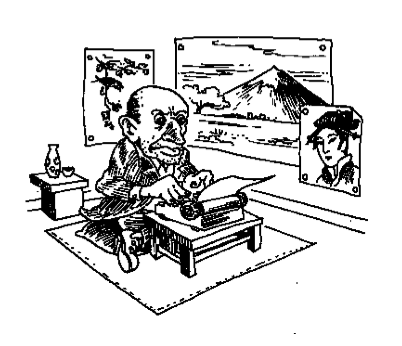As you may have heard—although you may very well not have, and although such stunningly uncultured innocence, however widespread, might come as a shock to the system of our loud but trifling herd of lit scholars, critics, and gatekeepers—some of the finest American literary journals began in the mid-1990s to publish poems by a poet who did not ever exist. Not that editors knew it at the time: the Araki Yasusada poems, coming completely luggaged up with pure cock-and-bull biography, bibliography, annotations, transnational gray areas, and an abundance of seemingly authentic cultural traction, were proudly disseminated as the real deal, a perfectly cool example of international “witness poetry,” a true voice from the ground zero of Hiroshima scar trauma and radioactive anguish. Then the rumors began to proliferate: Yasusada was a charade, a persona rigged from whole cloth and devised, at the very least, to exploit and/or investigate the prevailing yen for “exotic” first-person culture. In 1996, Eliot Weinberger exposed the hoax in print for the first time in the Village Voice, just weeks before American Poetry Review straight-facedly published a suite of Yasusada poems, including by way of an author’s photo a charcoaly, third-generation Xerox portrait of a Japanese man, identity unknown.
Well, identity known by at least one person, one cackling goldbricker, right? Who would do such a dreadful thing to world literature? Naturally, the bamboozled editors, critics, and Nipponophiles were outraged to tears—the public statements, symposiums, and sociocritical knuckle-whitening quickly became a cottage industry (a Web search will tell you more than you ever wanted to know about the man who wasn’t there), and the top-shelf project quickly became a lynch-mob campaign to peg the blighter. Suspicion instantly fell on an Illinois community-college prof and editor named Kent Johnson, “executor” of translator Tosa Motokiyu’s estate—but Motokiyu is a pseudonym of Johnson’s old university roommate, Johnson has admitted without divulging the man’s true identity. “Motokiyu” “died” conveniently before the hubbub broke in any case, we’re told. Johnson’s buddy, Mexican folksinger Javier Alvarez, keeps popping up in the discourse as well, for no better reason, it seems, than to be proffered as a possible straw-man suspect. The conspiracy-theory mill churned mightily for the handful that cared: writing in the journal Rhizomes, a Russian gumshoe-critic named Mikhail Epstein traced Johnson back to a St. Petersburg lit conference also attended by a pair of well-known Russian lit-hoaxers, both of whom had announced long-brewing “Japanese” projects. Professor Plum attended as well, with a candlestick.
There’s more to the story, for the simple reason that every time Johnson opens his mouth he deliberately contradicts what he’s said before, at one point (as reported in ...
You have reached your article limit
Sign up for a digital subscription and continue reading all new issues, plus our entire archives, for just $1.50/month.
Already a subscriber? Sign in





